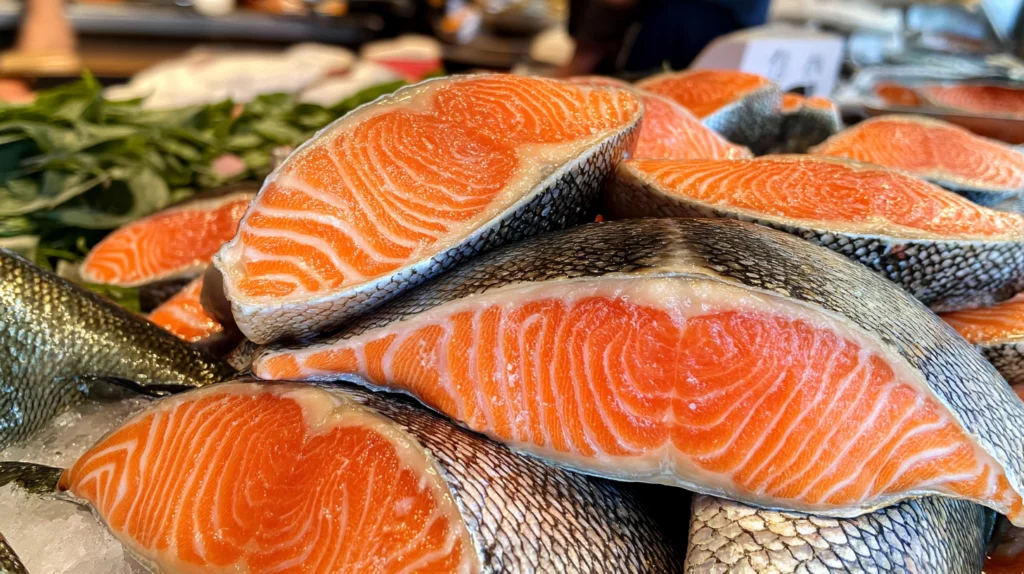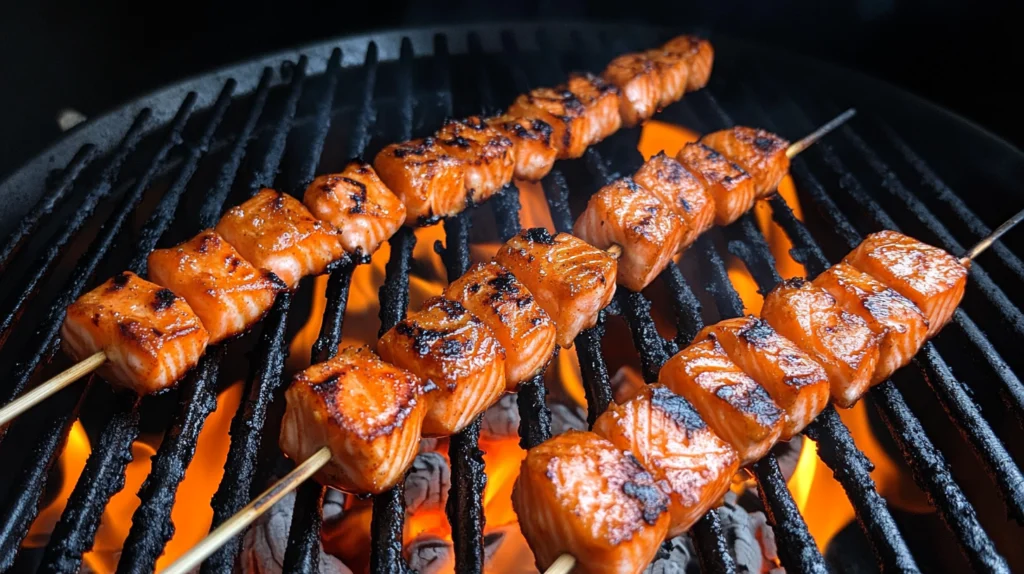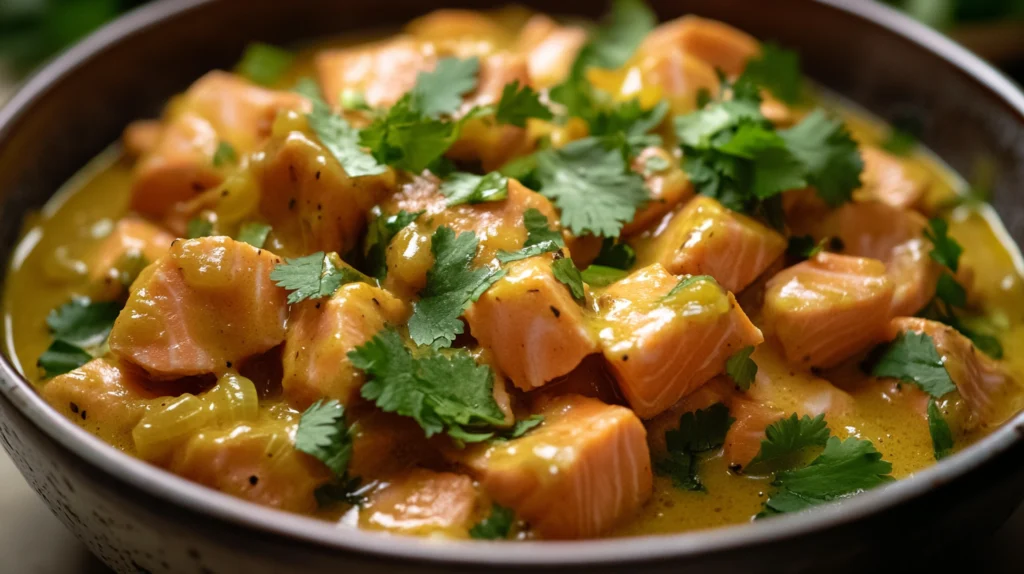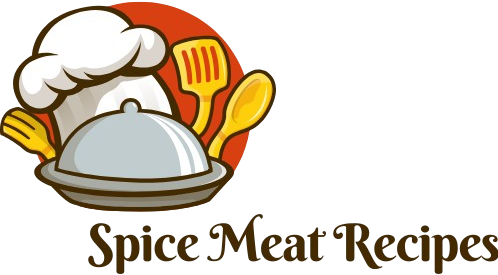Salmon chunks have gained immense popularity as a versatile, nutritious, and delicious ingredient in kitchens worldwide. For instance, whether you’re an aspiring home cook or an experienced chef, salmon chunks offer a wealth of culinary possibilities. From being the centerpiece of a hearty meal to a protein-packed addition to your favorite stir-fry or salad, these bite-sized portions of salmon are as adaptable as they are delectable.
Moreover, their nutritional value and ease of preparation make salmon chunks a staple for health-conscious individuals. As a result, they have become a go-to option for those seeking quick, flavorful, and nutritious meals.
What Are Salmon Chunks?
Salmon chunks are precisely what the name implies—small, bite-sized pieces of salmon fillets or steaks that have been cut for easy cooking and consumption. Unlike larger fillets or steaks, these chunks cook quickly and evenly, making them a convenient choice for busy individuals. Additionally, they retain all the richness and flavor of salmon, making them ideal for recipes that demand quick preparation or uniform cooking.
Grilled Sockeye Salmon Recipe: Ideal for exploring another delicious grilling method for salmon.
For example, salmon chunks can be sourced from different types of salmon, such as Atlantic, sockeye, or king salmon, each offering a slightly different taste and texture. This variety allows you to tailor your choice to suit your recipe or personal preference.
Common Uses
Salmon chunks are perfect for a variety of dishes:
- Stir-Fries: Their small size makes them ideal for tossing in woks with vegetables and sauces.
- Skewers: Thread salmon chunks onto skewers for grilling or baking.
- Casseroles: Use them in casseroles for a protein-rich twist.
- Salads: They’re an excellent addition to cold or warm salads.
Therefore, whether you’re planning a light lunch or a hearty dinner, salmon chunks are incredibly versatile and can be used in countless ways.
Nutritional Value of Salmon Chunks
Salmon is often referred to as a superfood, and its smaller chunks are no exception. Not only are they easy to cook, but they’re also packed with omega-3 fatty acids, high-quality protein, and essential vitamins and minerals. Furthermore, they provide an easy way to include important nutrients in your diet without requiring complicated preparation.
Salmon with Sun-Dried Tomato Cream Sauce: Pair your salmon chunks with a creamy and flavorful sauce.
Key Nutrients Found in Salmon Chunks:
- Omega-3 Fatty Acids: Vital for heart health and brain function.
- Vitamin B12: Essential for energy production and nervous system health.
- Selenium: A powerful antioxidant that combats oxidative stress.
- High-Quality Protein: Aids muscle repair and growth.
Moreover, including salmon chunks in your meals can offer several health benefits. For instance, they contribute to improved cardiovascular health, reduced inflammation, enhanced brain and cognitive function, and better skin and hair health.
How to Choose the Best Salmon for Chunks?
When preparing diced salmon., the quality of the salmon you select can make or break your dish. For this reason, it’s essential to know how to choose the freshest and best-quality salmon available. Moreover, understanding where your salmon comes from and how it’s handled can ensure that your meal is both delicious and safe to eat.
The Ultimate Salmon Stew Recipe: Discover how to incorporate salmon into hearty stews.
Tips for Selecting Fresh Salmon
- Check the Smell: Fresh salmon should have a mild, briny smell similar to the ocean. On the other hand, if it has a strong, fishy odor, it’s likely not fresh.
- Look at the Color: The flesh of fresh salmon should be bright and vibrant, ranging from pink to deep orange, depending on the variety. If the color appears dull or grayish, it’s best to avoid it.
- Examine the Texture: Gently press the flesh of the salmon. Ideally, it should spring back and not leave a dent. If it feels mushy or slimy, it’s a sign the salmon may have spoiled.
- Inspect the Eyes and Skin (if buying whole salmon): The eyes should be clear and not cloudy, while the skin should be shiny and moist.
Farmed vs. Wild-Caught Salmon
In addition to inspecting freshness, consider whether you prefer farmed or wild-caught salmon. Wild-caught salmon tends to have a firmer texture and richer flavor, while farmed salmon is often more affordable and has a higher fat content. However, make sure the farmed salmon you purchase is sustainably raised to avoid environmental concerns.
Frozen vs. Fresh
Fresh salmon is ideal for its taste and texture, but frozen salmon can also be a great option, especially if it’s flash-frozen shortly after being caught. Furthermore, frozen salmon can be stored longer, making it a practical choice for meal planning.

Preparing Salmon Chunks for Cooking
Once you’ve selected the best salmon, the next step is preparing it for cooking. This step, although simple, can make a big difference in how your salmon chunks turn out. To ensure uniform cooking, it’s essential to cut the salmon correctly and handle it with care.
Step-by-Step Guide to Cutting Salmon into Chunks
- Gather Your Tools: You’ll need a sharp knife, a clean cutting board, and kitchen tweezers to remove any bones.
- Remove the Skin (Optional): If you prefer skinless chunks, place the salmon fillet skin-side down and slide the knife between the skin and the flesh while holding the skin taut. However, leaving the skin on can add flavor and prevent the chunks from falling apart during cooking.
- Check for Pin Bones: Run your fingers along the flesh to feel for any bones. Then, use tweezers to pull them out.
- Cut Into Even Pieces: Slice the fillet into uniform, bite-sized chunks (about 1-2 inches wide). This ensures they cook evenly.
Tips for Best Results
- Work with Cold Salmon: Chilled salmon is easier to handle and cut cleanly.
- Avoid Overhandling: Salmon is delicate, so try not to squeeze or press it too much while cutting.
- Use a Clean Surface: This prevents cross-contamination and keeps the fish fresh.
Seasoning the Chunks Before Cooking
Before you start cooking, lightly season the bite-sized salmon. For instance, a sprinkle of salt and pepper can enhance the natural flavors, or you can use a marinade to infuse bold tastes. In addition, let the chunks sit with the seasoning for 10-15 minutes to allow the flavors to penetrate.
Cooking Techniques for Salmon Chunks
Cooking salmon chunks is incredibly versatile because they adapt well to a variety of techniques. Whether you prefer baking, grilling, pan-searing, or air frying, there’s a method to suit every palate and occasion. Let’s take a closer look at some of the most popular ways to cook bite-sized salmon.
1. Baking
Baking salmon they chunks is ideal for achieving a tender, flaky texture. To bake them:
- Preheat your oven to 375°F (190°C).
- Place the seasoned chunks on a baking sheet lined with parchment paper.
2. Grilling
Grilling salmon chunks adds a smoky flavor that enhances their natural richness. For best results:
- Thread the chunks onto skewers to keep them from falling apart.
- Brush them with olive oil or a marinade to prevent sticking.
3. Pan-Searing
Pan-searing is a quick and flavorful method. To achieve a crispy exterior:
- Heat a nonstick skillet over medium-high heat with a tablespoon of oil.
- Sear the chunks for 2-3 minutes per side until golden brown.
4. Air Frying
For a healthier option, use an air fryer to cook salmon chunks with minimal oil.
- Preheat the air fryer to 400°F (200°C).
- Arrange the chunks in a single layer and cook for 7-10 minutes.

Recipes Featuring Salmon Chunks
Cooking salmon chunks is not just about technique—it’s also about creativity! To inspire your next meal, here are some delicious recipes that showcase the versatility of salmon chunks. Whether you’re cooking for yourself or hosting guests, these recipes are sure to impress.
Baked Salmon Belly: Learn the best techniques for baking salmon.
1. Salmon Stir-Fry with Vegetables
This quick and easy stir-fry is perfect for busy weeknights. The combination of salmon it chunks and colorful vegetables makes it both healthy and satisfying.
Ingredients:
- 1 lb (450 g) diced salmon.
- 2 tbsp soy sauce
- 1 tbsp sesame oil
- 1 clove garlic, minced
- 1 tsp ginger, grated
- 1 tbsp cornstarch mixed with 2 tbsp water (optional for thickening)
Instructions:
- Heat the sesame oil in a wok or skillet over medium-high heat.
- Add the garlic and ginger, stirring until fragrant.
- Toss in the salmon chunks and sear for 2 minutes on each side. Be careful not to overcook.
- Remove the salmon and set aside.
- Return the salmon to the pan and drizzle with soy sauce. Add the cornstarch mixture if a thicker sauce is desired.
- Stir gently to coat everything, then serve hot with steamed rice or noodles.
2. Grilled Salmon Skewers with Lemon and Dill
Perfect for outdoor gatherings, these skewers are simple yet bursting with fresh flavor. Moreover, the smoky char from the grill pairs beautifully with the tangy lemon and aromatic dill.
Ingredients:
- 1 lb (450 g) salmon chunks
- 2 tbsp olive oil
- Juice of 1 lemon
- Salt and pepper to taste
- Wooden or metal skewers
Instructions:
- In a bowl, mix olive oil, lemon juice, dill, salt, and pepper. Add the salmon chunks and toss to coat. Let marinate for 20 minutes.
- Thread the salmon chunks onto the skewers.
- Grill over medium heat for 3-4 minutes per side, or until the salmon is cooked through and slightly charred.
- Serve with a side of tzatziki sauce or a fresh green salad.
3. Creamy Salmon Chunk Curry
For those craving something bold and comforting, this curry brings rich, warm flavors to the table. It’s perfect with rice or naan bread.
Ingredients:
- 1 lb (450 g) salmon chunks
- 1 tbsp vegetable oil
- 1 onion, finely chopped
- 2 cloves garlic, minced
- 1 tbsp curry powder
- 1 tsp turmeric
- 1 can (14 oz) coconut milk
- 1 cup diced tomatoes
- Salt and pepper to taste
- Fresh cilantro for garnish
Instructions:
- Heat the oil in a large skillet or pot over medium heat.
- Stir in the curry powder and turmeric, letting them bloom in the oil for 30 seconds.
- Add the coconut milk and diced tomatoes, stirring well. Simmer for 5 minutes.
- Gently add the salmon chunks to the curry and cook for 8-10 minutes, or until the fish is opaque and tender.
- Season with salt and pepper, then garnish with fresh cilantro before serving.

4. Baked Salmon Chunk Casserole
This comforting casserole is creamy, cheesy, and loaded with flavor. It’s an excellent option for a family dinner or a potluck.
Ingredients:
- 1 lb (450 g) salmon chunks
- 2 cups cooked pasta (e.g., penne or rotini)
- 1 cup heavy cream
- 1/2 cup breadcrumbs
- 1/4 cup grated Parmesan cheese
- 1 tbsp olive oil
- Salt, pepper, and Italian seasoning to taste
Instructions:
- Preheat your oven to 375°F (190°C).
- In a large bowl, mix the pasta, cream, shredded cheese, and seasonings.
- Gently fold in the salmon chunks.
- Transfer the mixture to a greased baking dish and sprinkle with breadcrumbs and Parmesan.
- Drizzle olive oil over the top for a golden crust.
- Bake for 20-25 minutes, or until bubbly and lightly browned. Serve hot.
Frequently Asked Questions About Salmon Chunks
Cooking, storing, and enjoying salmon chunks often comes with a few questions. To make things easier, here are answers to some of the most frequently asked questions about diced salmon.
1. How do I remove the skin from salmon chunks?
Removing the skin from salmon is straightforward, but you’ll need a sharp knife for clean cuts. Here’s how to do it:
- Place the salmon chunk skin-side down on a cutting board.
- Hold the skin firmly at one corner with your fingers.
- Slide the knife between the skin and the flesh at a slight angle, keeping it as close to the skin as possible.
- Gently work the knife along the length of the chunk until the skin is completely separated.
Tip: If you plan to grill or pan-sear the chunks, leaving the skin on can help keep them intact and add extra flavor.
2. What is the best way to season salmon chunks?
The best seasoning depends on the flavor profile you’re aiming for. Here are some popular seasoning options:
- Classic: Salt, pepper, and a squeeze of lemon for a simple yet flavorful dish.
- Herbaceous: Use fresh herbs like dill, parsley, or rosemary, paired with garlic and olive oil.
- Spicy: Add a kick with chili powder, paprika, or cayenne pepper.
- Asian-Inspired: Marinate the salmon in soy sauce, ginger, and sesame oil for an umami-packed meal.
Pro Tip: Let the salmon sit with the seasoning for 10-15 minutes before cooking to allow the flavors to penetrate.
3. Can I use frozen salmon chunks directly in recipes?
Yes, you can cook frozen salmon chunks without thawing them, but you’ll need to adjust the cooking time. For instance:
- Baking: Add 5–10 extra minutes to the baking time.
- Pan-Searing: Cook on medium heat to avoid burning the outside before the inside is fully cooked.
- Grilling: It’s best to thaw salmon before grilling, as frozen chunks can be more fragile and prone to breaking apart.
Tip: Thawed salmon generally cooks more evenly, so thawing is recommended whenever possible.
4. Are salmon chunks healthy?
Absolutely! Salmon chunks are an excellent source of essential nutrients. They are:
- Rich in omega-3 fatty acids that promote heart health and brain function.
- Packed with high-quality protein that supports muscle repair and growth.
- A great source of vitamin D, selenium, and B vitamins, all of which contribute to overall health.
As a result, including salmon chunks in your diet can improve cardiovascular health, reduce inflammation, and enhance brain function.
5. What are some quick marinades for salmon chunks?
If you’re short on time, try one of these easy marinades to elevate the flavor of your salmon chunks:
- Lemon Garlic Marinade: Mix olive oil, lemon juice, minced garlic, and a pinch of salt and pepper.
- Honey Soy Marinade: Combine soy sauce, honey, sesame oil, and grated ginger.
- Mediterranean Marinade: Use olive oil, lemon zest, oregano, and paprika for a bold, herbaceous flavor.
Tip: Marinate for at least 20 minutes, but avoid exceeding 1 hour to prevent the salmon from becoming mushy.
6. How do I know when salmon chunks are fully cooked?
The best way to check if salmon chunks are done is to use a fork or a thermometer. Here’s what to look for:
- Temperature: Insert a meat thermometer into the thickest part of the salmon.
Tip: Avoid overcooking salmon, as it can become dry and lose its delicate flavor.
7. Can I eat salmon chunks raw?
Yes, but only if the salmon is labeled as “sushi-grade” or has been frozen properly to kill any parasites. Raw salmon is commonly used in dishes like poke bowls, sushi, or sashimi. Always ensure the salmon is fresh and sourced from a reputable supplier.
Conclusion
Salmon chunks are not only a delicious and versatile ingredient but also a powerhouse of nutrition. From selecting the freshest fish to mastering the art of cooking and pairing, there’s so much you can do with this incredible superfood. Whether you’re creating a quick weeknight meal or an impressive dish for guests, salmon chunks offer endless possibilities.
Salmon Bites Recipe: Explore a similar recipe for bite-sized salmon snacks.
Incorporate them into stir-fries, skewers, casseroles, or curries, and pair them with complementary sides like roasted vegetables or quinoa. With the tips and recipes in this guide, you’re ready to elevate your cooking game and make salmon chunks a staple in your kitchen.
So why wait? Grab some salmon, follow these tips, and enjoy the mouthwatering dishes you can create with salmon chunks today!

